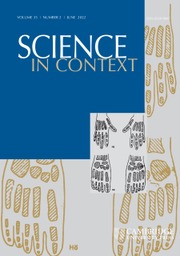Article contents
Watching Exotic Animals Next Door: “Scientific” Observations at the Zoo (ca. 1870–1910)
Published online by Cambridge University Press: 28 April 2011
Argument
The nineteenth century witnessed the advent of the modern zoo. Nearly everyone who came to watch the exotic animals was a “lay person” in the sense that virtually none had formal training in zoology. This paper provides a typology of these observers: the zoo directors, assistants, keepers, animal painters, and the “common” visitor. What did they observe and what were their motivations? Did they pursue a certain agenda? What kind of knowledge, if any, did they produce? Soon the issue of the reliability of these observations emerged. Lay observers insisted on the veracity of their intimate and personal knowledge of animals while academics complained that their claims could not be generalized and were tainted by anthropomorphism. Hence the focus on the observations of these laymen will reveal contemporary assumptions on what may count as “scientific.” This is closely linked to the question of how far the zoo may qualify as a site of scientific investigation in the first place. The constraints on doing research on animals in a public space such as the zoo were numerous. Yet despite these obstacles the zoological garden contributed to the rise of ecological thinking as well as to the formation of ethology as a scientific discipline.
- Type
- Research Article
- Information
- Science in Context , Volume 24 , Issue 2: Lay Participation in the History of Scientific Observation , June 2011 , pp. 183 - 214
- Copyright
- Copyright © Cambridge University Press 2011
References
Archival Sources
References
- 21
- Cited by


